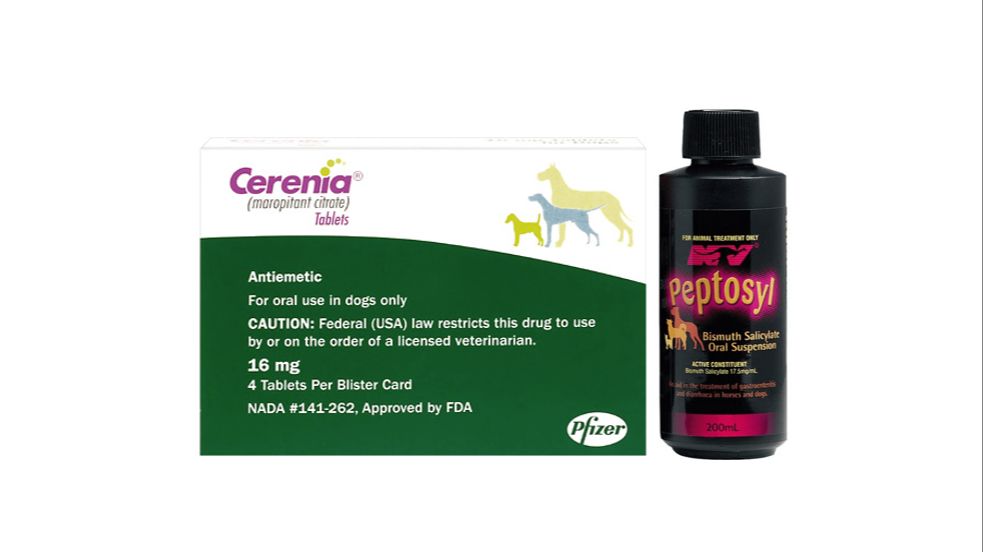Introduction
Zofran (generic name ondansetron) is a medication used to prevent nausea and vomiting in dogs. It belongs to a class of drugs called 5-HT3 receptor antagonists that block serotonin receptors to relieve nausea. Zofran is commonly prescribed by vets to treat vomiting and nausea associated with chemotherapy, car sickness, and gastrointestinal issues. It helps control nausea and vomiting so dogs can keep food down and maintain proper hydration and nutrition during illness.
Zofran comes in both injectable and oral formulations. The injectable form is given intravenously by a vet, while the oral form comes in tablet or liquid form and can be easily administered at home. Zofran provides fast-acting relief from nausea by calming down key nausea triggers in the brain and digestive system. It is considered safe for short-term use in dogs when given at the proper dosage.
This article will provide an overview of using Zofran for dogs, including dosage guidelines, administration, side effects, and precautions to discuss with your vet.
What is Zofran?
Zofran is a prescription antiemetic drug used to prevent nausea and vomiting. Its generic name is ondansetron. It belongs to a class of medications called 5-HT3 receptor antagonists that work by blocking serotonin receptors to relieve nausea and vomiting.
Zofran was originally developed and approved for human use. However, veterinarians widely prescribe it off-label for dogs to control nausea and vomiting from various causes like chemotherapy, motion sickness, and gastroenteritis.
Uses of Zofran in Dogs

Zofran is commonly used in dogs for treating nausea, vomiting, and motion sickness. Its main medical use is as an anti-emetic medication to prevent and treat nausea and vomiting.
Some of the key uses and benefits of Zofran for dogs include:
- Nausea – Zofran is highly effective at reducing nausea caused by medications, infections, motion sickness, or other medical conditions.
- Vomiting – The medication can prevent and treat vomiting episodes in dogs. It helps stop acute vomiting as well as prevent recurring vomiting.
- Motion Sickness – Zofran is often used to alleviate motion sickness symptoms like nausea and vomiting in dogs. It can prevent car sickness.
By blocking serotonin receptors, Zofran stops nausea and vomiting signals to the brain. This makes it useful for treating these conditions in dogs when administered by a veterinarian.
How Zofran Works
Zofran contains the active ingredient ondansetron hydrochloride, which belongs to a class of medications called 5-HT3 receptor antagonists. It works by blocking serotonin receptors called 5-HT3 receptors found along the vagus nerve, which runs from the brain to the stomach.
When serotonin binds to these receptors, it triggers a vomiting reflex. By blocking these receptors, Zofran stops these serotonin signals from reaching the brain and stops this reflex from occurring, preventing nausea and vomiting.
So in essence, Zofran suppresses the vomiting center of the brain by inhibiting serotonin activity. This makes it very effective at controlling nausea and vomiting in dogs from various causes like motion sickness, anesthesia, parvovirus, and chemotherapy.
Zofran Dosage for Dogs

The dosage of Zofran for dogs depends on several factors:
Weight: Zofran dosage is based on the dog’s weight. The usual dosage is 0.5 to 1 mg per pound (1 to 2 mg/kg) given 2-3 times per day. Lighter dogs will be at the lower end of the dosage range, while heavier dogs will need more.
Reason for use: The dose may be adjusted based on why Zofran is being given. Higher doses may be used for treating vomiting compared to preventing nausea from surgery or chemotherapy.
Form of Zofran: Zofran is available as tablets, orally disintegrating tablets, oral solution, and injectable solution. Tablets and orally disintegrating tablets provide the standard dosages. The oral solution allows more precise dosing for smaller dogs.
Zofran is given every 8-12 hours as needed to control vomiting and nausea in dogs. The duration of treatment depends on the underlying cause. Your veterinarian will advise you on the appropriate total daily dosage and length of treatment with Zofran for your dog.
Zofran Dosage Chart by Weight
The dosage of Zofran for dogs depends on the weight of your dog. Here are general dosage guidelines:
- Small dogs under 10 lbs: 1-2 mg every 8-12 hours as needed
- Medium dogs 10-25 lbs: 2-4 mg every 8-12 hours as needed
- Large dogs over 25 lbs: 4-8 mg every 8-12 hours as needed
Your veterinarian will provide the exact dosage based on your dog’s weight and medical condition. Always follow your vet’s dosage recommendations. Never give your dog more Zofran than prescribed.
For small dogs, a typical dosage is 1 mg per 10 lbs of body weight, given 2-3 times a day. Medium dogs may receive 2-4 mg per 10 lbs every 8-12 hours. Large dogs can take 4-8 mg per 10 lbs every 8-12 hours.
Your vet may prescribe a different dosage depending on the severity of nausea and how your dog responds to the medication.
Administering Zofran to Dogs
Zofran is typically administered to dogs orally (by mouth) or intravenously (IV). Here’s how to give Zofran to dogs using each method:

Oral Administration
The most common way to give Zofran to dogs is orally. Zofran tablets can be given directly into a dog’s mouth. However, since the tablets have a bitter taste, it may be easier to disguise them in a small amount of tasty wet dog food or peanut butter.
Zofran oral disintegrating tablets can also be used. These tablets dissolve quickly on the tongue and don’t require water. Place the tablet directly in the dog’s mouth on top of the tongue and make sure they swallow it.
It’s important to follow the proper Zofran dosage for dogs based on their weight when administering orally.
Intravenous Injection
For more severe nausea and vomiting, veterinarians may give Zofran to dogs through intravenous (IV) injection. This allows the medication to bypass the digestive system and go directly into the bloodstream for faster relief.
IV Zofran is given by veterinarians in a clinic or hospital setting. The injection provides faster absorption compared to oral tablets. Vets will calculate the correct dose based on the dog’s weight and administer it slowly via IV injection. This route is used for more immediate nausea relief.
Following the veterinarian’s dosage and administration instructions is crucial when giving Zofran to dogs. Never administer Zofran orally or intravenously to your dog without guidance from your vet.
Side Effects of Zofran in Dogs
While Zofran is generally well tolerated in dogs when used according to veterinarian instructions, some side effects can occur. The most common side effects of Zofran in dogs include:

-
Gastrointestinal Issues: Nausea, vomiting, diarrhea, and constipation have been reported in some dogs after receiving Zofran. These side effects are more likely at higher dosages.
-
Headache: Some dogs may experience mild headache or a feeling of pressure/fullness in the head when taking Zofran.
-
Drowsiness: Zofran can cause drowsiness, fatigue, and reduced energy levels in some dogs. This side effect is temporary and should subside as the body adjusts to the medication.
In most cases, the side effects of Zofran are mild and temporary. However, dog owners should monitor their pet closely and contact their veterinarian if any worrisome or severe side effects develop. It’s important to follow dosage instructions carefully to minimize the risk of side effects with Zofran.
Precautions for Zofran Use in Dogs
Before giving your dog Zofran, be sure to discuss any pre-existing conditions or other medications with your veterinarian. There are some precautions to be aware of:
- Zofran is not recommended for dogs with liver disease or failure, as the medication is metabolized by the liver. Severe liver dysfunction can lead to build up of Zofran in the body.
- Dogs taking certain antidepressants like amitriptyline or fluoxetine may have adverse reactions if also given Zofran. The combination can lead to serotonin syndrome.
- Zofran may interact with heart medications like amiodarone and QT prolonging drugs. Using Zofran together with these drugs can disturb heart rhythms.
- If your dog is dehydrated or has electrolyte imbalances, Zofran could exacerbate these conditions. Hydration status should be addressed before starting Zofran.
- Dogs with congenital long QT syndrome are at higher risk for heart arrhythmias from Zofran.
- Puppies and pregnant/nursing dogs have not been studied for Zofran use. Potential risks are unknown.
Discuss your dog’s full medical history with your vet before using Zofran to avoid complications. Seek immediate care if your dog experiences unusual heart rate/rhythm, seizures, or serotonin syndrome symptoms like agitation, tremors, or restlessness while on Zofran.
Conclusion
Zofran is an anti-emetic medication sometimes prescribed by veterinarians to treat nausea and vomiting in dogs. It works by blocking serotonin receptors to prevent nausea and vomiting triggered by surgery, motion sickness, toxicity, and other conditions. While generally safe when used as directed, Zofran does come with some potential side effects like diarrhea and headache. It’s important to follow veterinary instructions on proper dosing for your dog’s weight and only give the medication as directed. If side effects do occur or you have any concerns, discuss them with your vet.
When used properly under veterinary supervision, Zofran can provide relief for a nauseous, vomiting dog. However, it’s always best to consult a vet before giving any medication to your pet. Your veterinarian is most qualified to assess your dog’s health, determine if Zofran is appropriate, and provide the correct dosage instructions. Never give your dog a medication unless explicitly directed by a vet, and immediately contact your vet if any troubling symptoms develop. With your vet’s guidance, Zofran can be a useful tool to stop nausea and help your dog feel better.